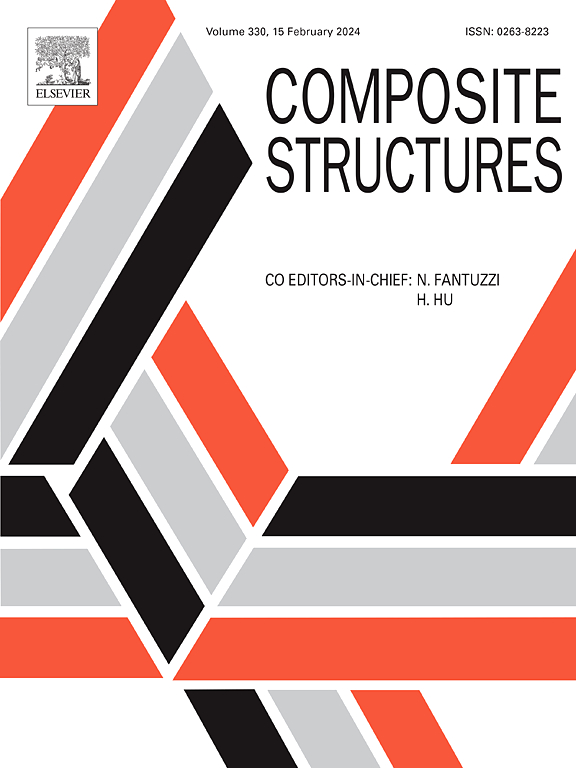空隙和断裂纤维缺陷对CFRP复合材料超细z销和I型断裂韧性的影响
IF 6.3
2区 材料科学
Q1 MATERIALS SCIENCE, COMPOSITES
引用次数: 0
摘要
为了最大限度地减少Z-pin插入对层压板面内性能造成的损害,研究人员开始研究精细Z-pin的使用和降低插入密度。然而,细z针的制造过程中引入了空洞和纤维断裂缺陷,导致z针质量下降,从而影响层间增韧的效果。在本研究中,通过大量的实验找出了Z-pin制备过程中的缺陷,并在Z-pin的固化过程中施加预应力,成功开发出了直径为80 μm和90 μm的高质量Z-pin。此外,本研究还广泛考察了这两种缺陷对Z-pin质量的影响,并提供了在现有加工条件下确定不同插入深度对应的最佳Z-pin尺寸的模型。例如,根据该模型,厚度为4 mm的层压板的最佳Z-pin尺寸为90 μm。这确保了z销的破坏模式保持在拔出和断裂之间的临界过渡状态,从而最大限度地提高了其抗拉强度利用率。通过实验验证了研究结果,为超细z针的应用提供了思路。本文章由计算机程序翻译,如有差异,请以英文原文为准。
The influence of void and fractured fiber defects on the ultrafine Z-pin and Mode I fracture toughness of CFRP laminates
To minimize the damage caused by Z-pin insertion to the in-plane properties of the laminate, researchers have initiated investigations into the utilization of fine Z-pins and reduced insertion densities. However, the manufacturing process of fine Z-pins introduces voids and fiber fracture defects, leading to a decline in Z-pin quality and consequently affecting the efficacy of interlaminar toughening. In this research, defects in the Z-pin preparation process were identified through extensive experiments, and pre-stressing is applied during the curing of the Z-pin, leading to the successful development of the high-quality 80 μm and 90 μm diameter Z-pins. Furthermore, this research extensively examines the impact of these two defects on the quality of Z-pins and provides a model to determine the optimal Z-pin size corresponding to various insertion depths under the existing processing conditions. For example, according to the model, the optimal Z-pin size for laminates with a thickness of 4 mm is 90 μm. This ensures that the Z-pin’s failure mode remains at the critical transition between pull-out and fracture, thereby maximizing its tensile strength utilization. The research findings are validated through experimental verification, thus providing insights for the application of ultrafine Z-pins.
求助全文
通过发布文献求助,成功后即可免费获取论文全文。
去求助
来源期刊

Composite Structures
工程技术-材料科学:复合
CiteScore
12.00
自引率
12.70%
发文量
1246
审稿时长
78 days
期刊介绍:
The past few decades have seen outstanding advances in the use of composite materials in structural applications. There can be little doubt that, within engineering circles, composites have revolutionised traditional design concepts and made possible an unparalleled range of new and exciting possibilities as viable materials for construction. Composite Structures, an International Journal, disseminates knowledge between users, manufacturers, designers and researchers involved in structures or structural components manufactured using composite materials.
The journal publishes papers which contribute to knowledge in the use of composite materials in engineering structures. Papers deal with design, research and development studies, experimental investigations, theoretical analysis and fabrication techniques relevant to the application of composites in load-bearing components for assemblies, ranging from individual components such as plates and shells to complete composite structures.
 求助内容:
求助内容: 应助结果提醒方式:
应助结果提醒方式:


